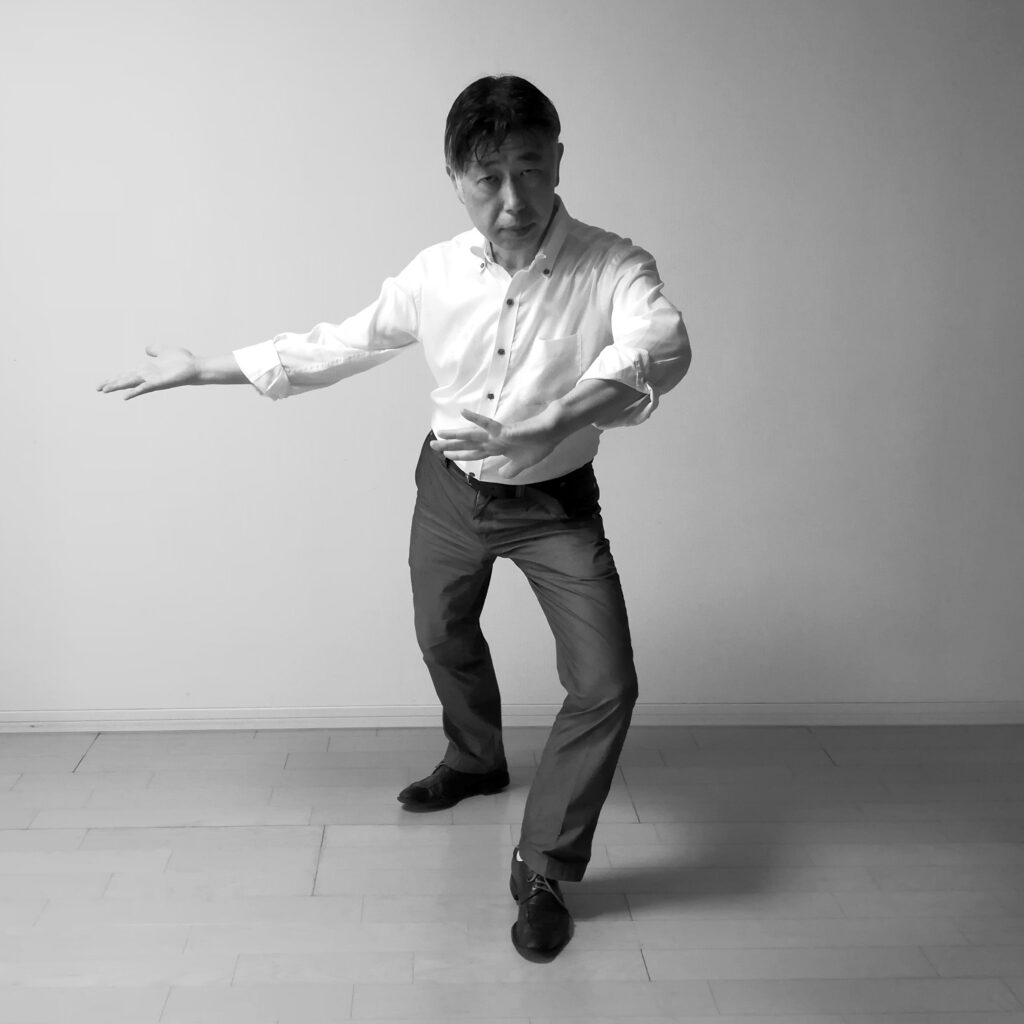
Along with the popularization of Tai Chi, there are several traditions that have been lost.
If you move forward with the bow-stance, you return your weight to the rear foot, then rotates the heel of the front foot. Is this a tradition?
Let’s explain.
In the northern style of Chinese martial arts, a step forward punch with same-side-step is the basis of the attack.
It is a continuously advancing walk of bow-stance to bow-stance.
In that movement, move forward while leaving the center of gravity on the front foot.
The ground contact surface of the rotation is the toes and its ball of the foot.
The heel does not become an axis when rotating while putting weight on the foot.
In Tai Chi walking, hands and feet are linked.
When advancing the step, the movement of the hand is Lu(捋).
The Lu is the Lu of the Peng-Lu-Ji-An(掤捋擠按).
The word of Lu(捋) means “Sticky hand wiping”.
The knee and hip joint are rotating externally in response to the hand movement. At the same time, it is important that the toes are active and alive.
(See the top photo)
This movement accumulates energy to step forward.
This is the basis of the bow-stance walking in Tai Chi.
In the popularized Tai Chi, it seems common practice to rotate with a heel.
To do so, you have to return your weight back to the rear foot.
Why did it become like this?
The tradition of martial arts has been gradually fading out from Tai Chi.
It is sad, but this would be the reality of the popularized Tai Chi.
It is the common sense of martial arts to use toes and its ball of the foot when rotating the pivot foot.
